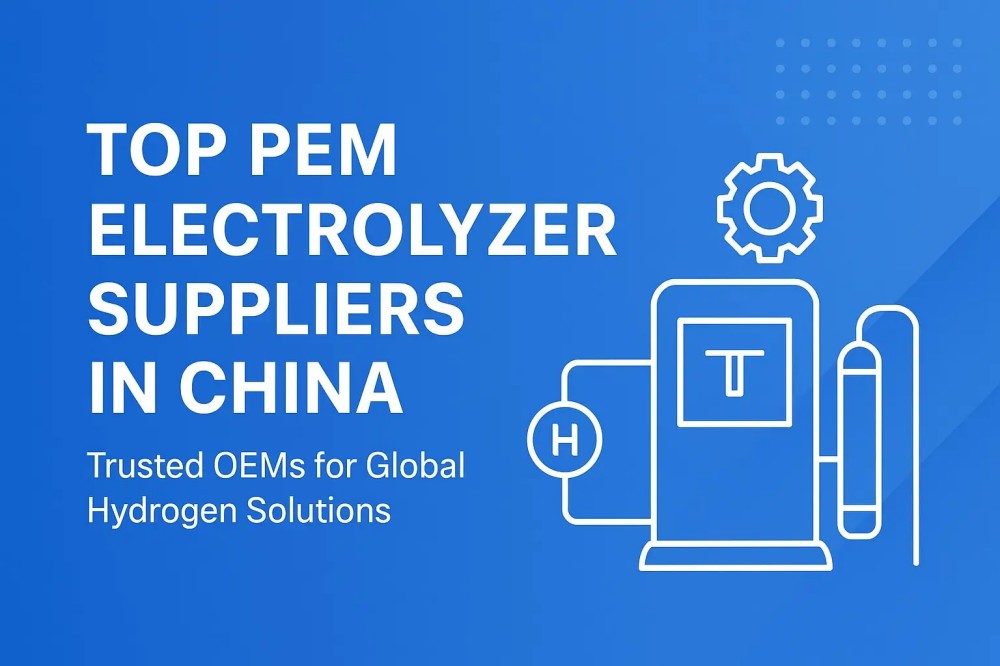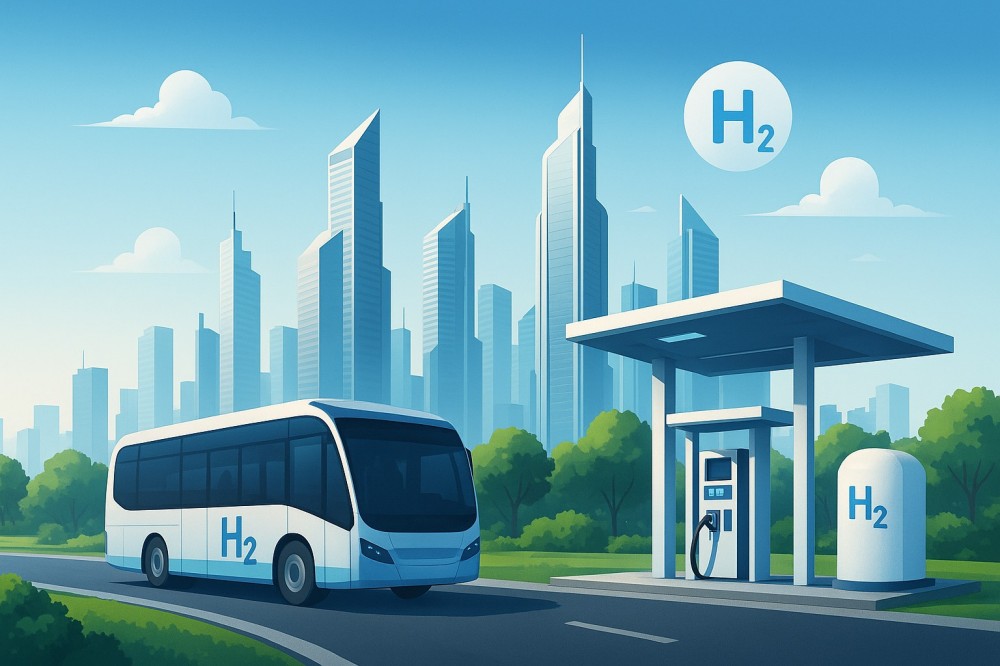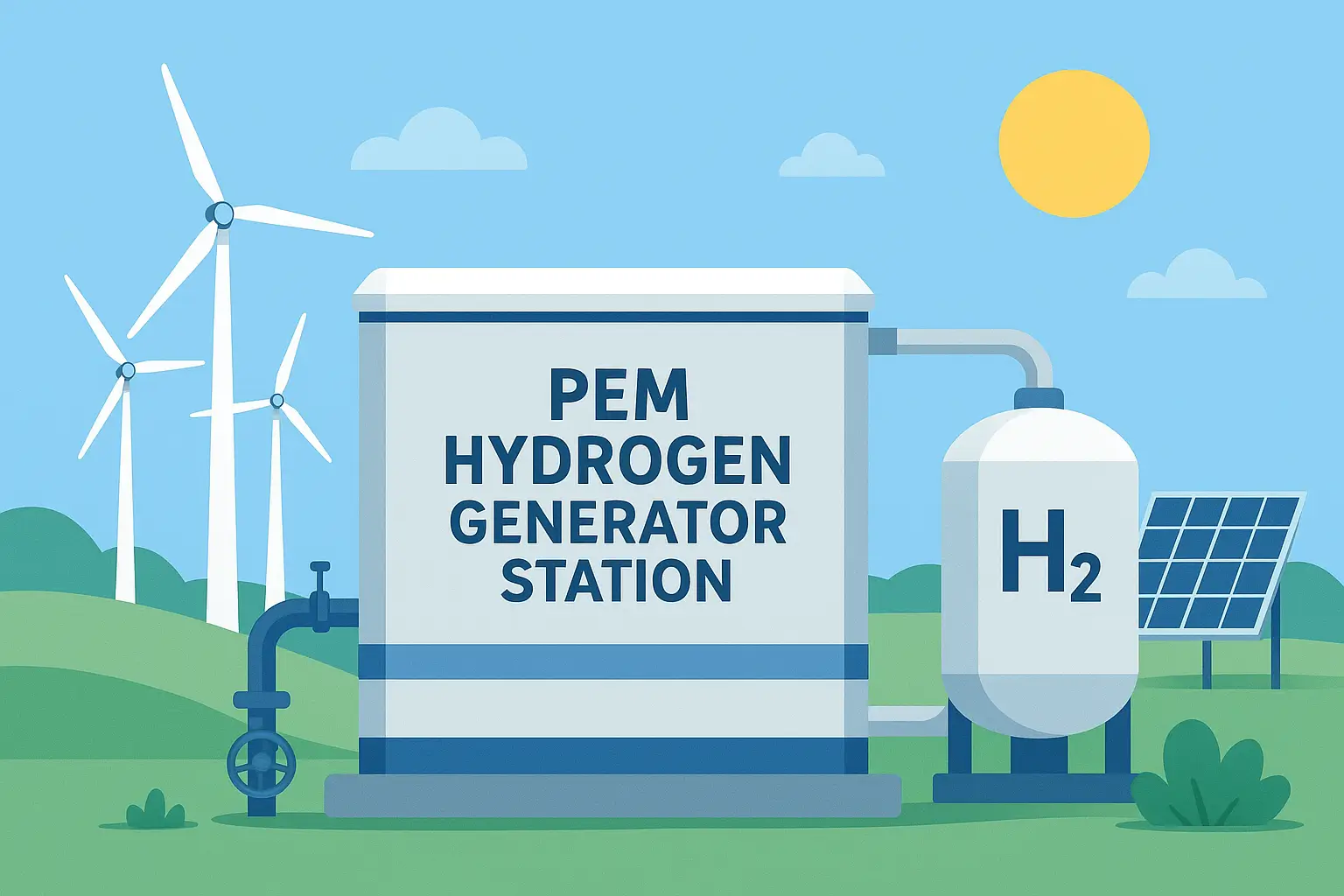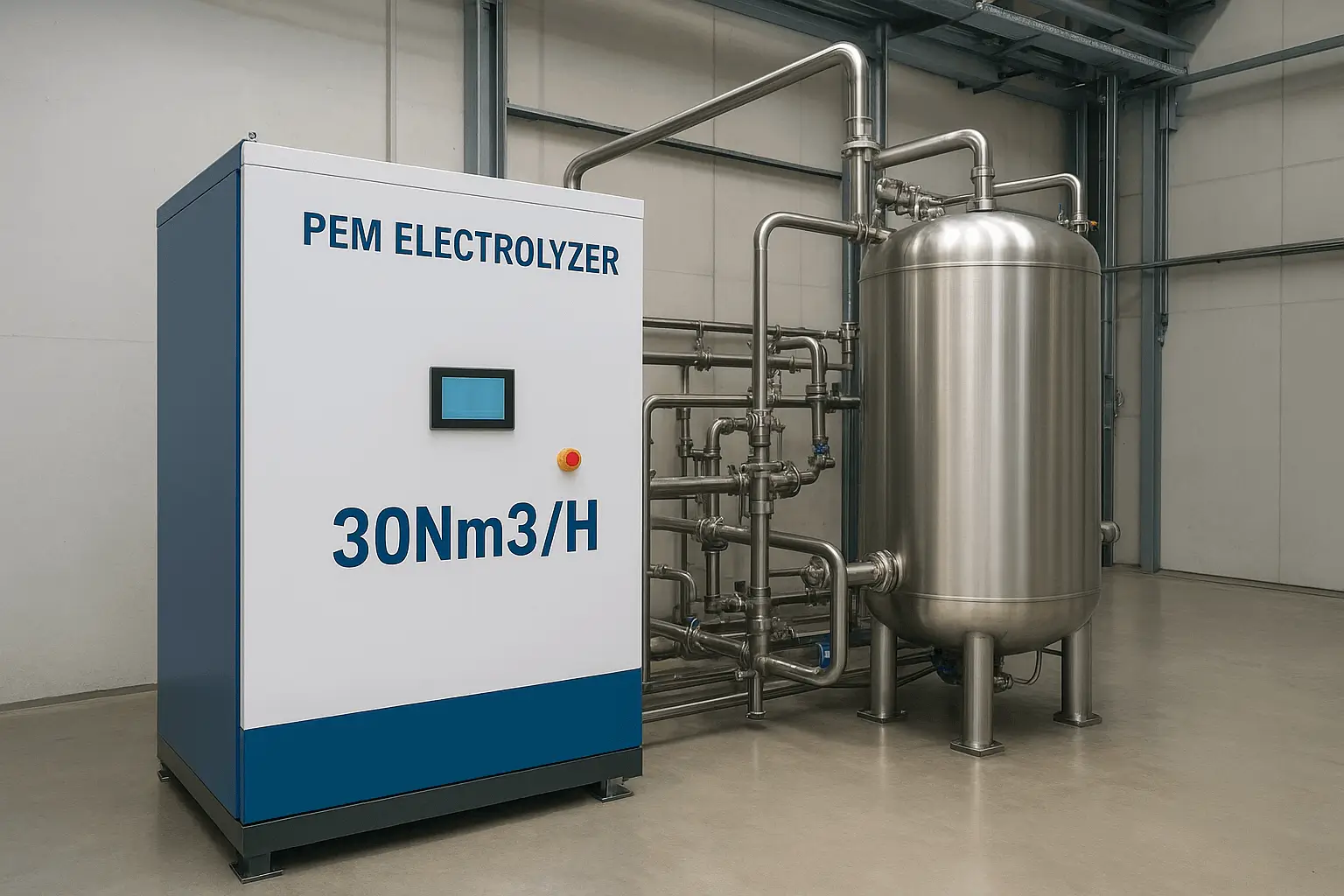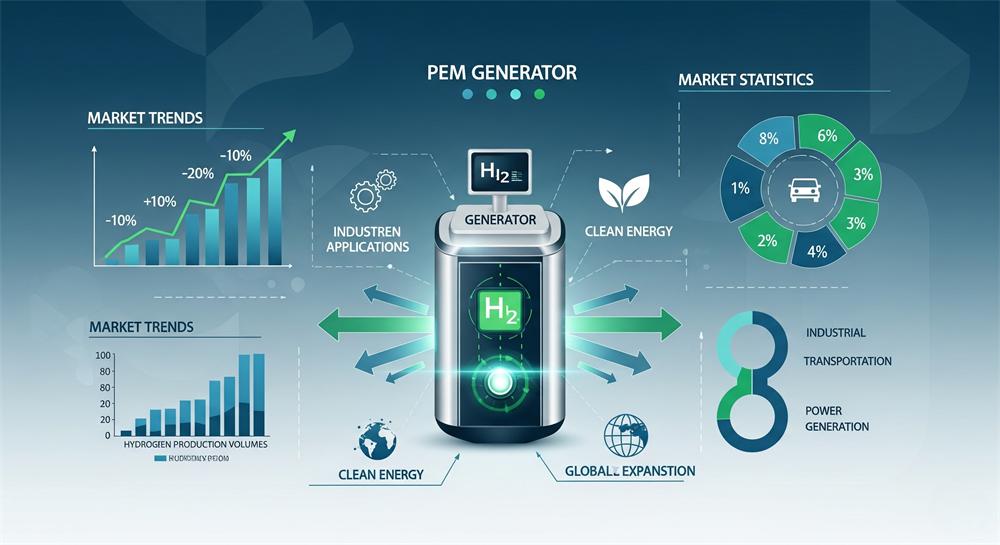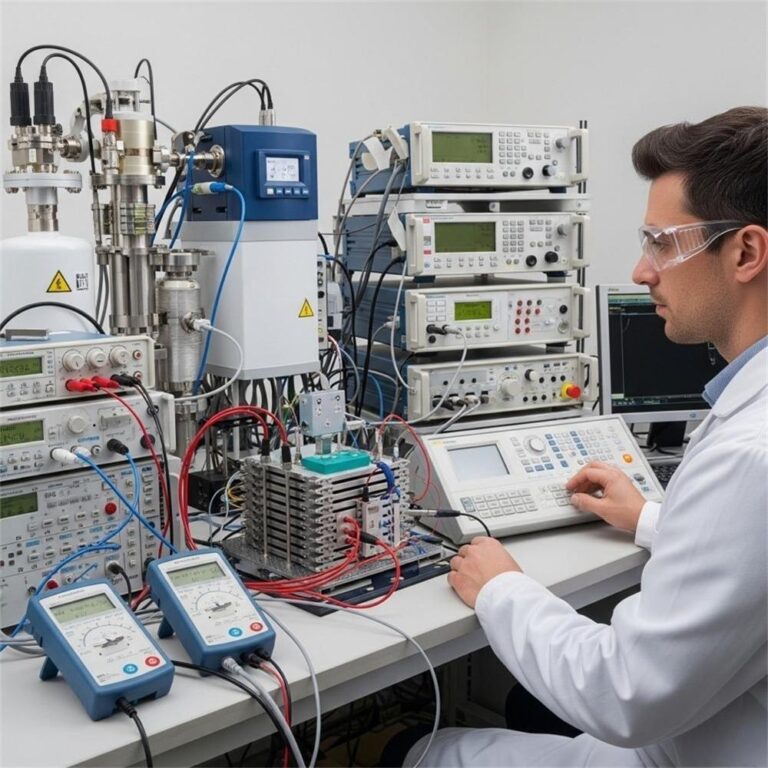Introduction to Free Energy in Renewable Systems
In today’s world, where climate change and fossil fuel dependence are major concerns, the idea of a “free energy generator” sounds almost too good to be true. Yet, when interpreted through the lens of renewable energy, this concept becomes not just plausible—but essential. Nature offers us an abundant supply of energy through the sun, wind, and water, all of which are freely available for harnessing.
However, despite the immense potential of renewables, current energy systems are riddled with limitations. These include inconsistent supply due to weather variations, storage issues, and challenges in efficiently converting and using renewable power. That’s where PEM water electrolyzers come in—a cutting-edge technology that can play a pivotal role in turning this “free” energy into a storable, transportable form: green hydrogen.
This article explores how PEM water electrolyzers work, how they integrate with renewable energy systems, and why they are central to the future of sustainable power generation.
Demystifying “Free Energy Generators”
What “Free Energy” Really Means
The term “free energy generator” often stirs controversy. In scientific circles, it can mistakenly evoke ideas of perpetual motion machines—which violate the laws of thermodynamics. But in the context of renewable energy, “free energy” simply refers to naturally occurring resources—like sunlight, wind, and flowing water—that cost nothing to produce and are infinitely replenishable.
Renewable Sources as Free Energy Providers
- Solar Energy: Captured via photovoltaic panels or concentrated solar power systems.
- Wind Energy: Generated using turbines placed in windy regions or offshore.
- Hydropower: Uses the natural flow of water to generate electricity.
- Biomass and Geothermal: Additional renewable sources that can power electrolyzers.
Avoiding the Pseudoscience Trap
It’s crucial to distinguish legitimate renewable energy technologies from pseudoscientific “free energy” claims. This article focuses strictly on scientifically validated technologies—particularly the use of PEM electrolyzers to convert renewable electricity into usable hydrogen.
PEM Water Electrolyzers Explained
What is a PEM Water Electrolyzer?
A PEM (Proton Exchange Membrane) water electrolyzer splits water (H₂O) into hydrogen (H₂) and oxygen (O₂) using electricity—ideally from renewable sources. The result is green hydrogen, which can be stored, transported, or converted back to electricity when needed.
The Science Behind PEM Electrolysis
In this process:
- Water is fed into the anode, where it’s split into protons, electrons, and oxygen gas.
- Protons pass through the PEM, while electrons take an external circuit path, creating an electric current.
- At the cathode, protons and electrons recombine to form pure hydrogen gas.
Key Components and Functions
- Anode/Cathode Electrodes
- Proton Exchange Membrane (PEM)
- Catalysts (typically platinum or iridium)
- Water Supply System
- Power Supply (ideally from solar or wind)
Advantages of PEM Water Electrolyzers
High Efficiency and Fast Start-Up
PEM electrolyzers are known for their quick response times, making them ideal for systems powered by intermittent sources like solar and wind.
Scalability and Compact Design
They can be scaled from small, residential systems to large industrial plants—offering flexibility across sectors.
Suitability for Intermittent Energy
Their dynamic operation capability allows them to run efficiently even when power supply fluctuates, unlike traditional alkaline electrolyzers.
Continuing from where we left off…
How PEM Electrolyzers Work with Renewable Sources
Solar and Wind Integration
PEM electrolyzers shine when paired with intermittent renewable sources like solar and wind. These energy sources don’t produce power continuously—solar stops at night, and wind speeds can vary. During periods of excess production, rather than wasting unused electricity, PEM electrolyzers can convert it into green hydrogen.
This hydrogen can then be:
- Stored for later use.
- Used directly in fuel cells to generate electricity.
- Injected into natural gas pipelines (a method known as power-to-gas).
Energy Capture and Hydrogen Storage
Instead of letting surplus renewable electricity go to waste or destabilize the grid, it’s more efficient to store it chemically in the form of hydrogen. This stored hydrogen can act as:
- A long-term energy reserve.
- A fuel for zero-emission vehicles.
- A feedstock for industry.
Power-to-Gas Systems
PEM electrolyzers are crucial components in power-to-gas systems, where electricity is transformed into a gaseous fuel—hydrogen. These systems are emerging as key solutions in creating flexible, hybrid energy systems that merge electric and gas infrastructure.
Real-World Applications and Case Studies
Europe’s Hydrogen Valleys
Initiatives like the H2Valley projects in Europe show how PEM electrolyzers can anchor local hydrogen economies. These integrated setups:
- Use solar/wind to power PEM units.
- Distribute hydrogen to buses, trains, and industry.
- Store surplus hydrogen for grid resilience.
Japan’s Renewable Hydrogen Networks
Japan is pioneering hydrogen-powered cities, where PEM electrolyzers convert offshore wind energy into hydrogen used in:
- Residential heating systems.
- Hydrogen fuel cell vehicles (HFCVs).
- Power plants.
Green Hydrogen in the US
In California, companies like Plug Power and Nel Hydrogen are deploying PEM electrolyzers in solar farms and data centers. The produced hydrogen helps stabilize grid loads during high-demand periods or emergencies.
Addressing the Intermittency of Renewables
Hydrogen as a Long-Term Storage Medium
Battery storage is great for short durations—but hydrogen offers a scalable, long-term option. It can:
- Be compressed or liquefied for months-long storage.
- Serve as seasonal energy storage.
- Power remote locations without grid access.
Grid Balancing and Backup Energy Supply
When demand surges or supply drops, stored hydrogen can be reconverted to electricity through fuel cells or gas turbines, helping utilities maintain grid reliability.
Seasonal Energy Storage
During sunny summers or windy winters, excess renewable energy can be turned into hydrogen and stored for use during low-production months. This concept is especially useful in northern climates or isolated islands.
Factors Influencing System Efficiency
Temperature and Pressure Settings
Higher operating temperatures can increase reaction rates but might affect membrane durability. Optimal operation typically occurs between 50°C to 80°C for PEM systems.
Current Density Optimization
Higher current densities can improve hydrogen output but may reduce efficiency due to increased voltage losses. Balancing current density and energy input is crucial.
Water Purity and Catalyst Selection
Using ultra-pure water and high-performance catalysts like platinum or iridium ensures:
- Greater efficiency.
- Longer system life.
- Lower maintenance needs.
Optimizing PEM Electrolyzer Systems
System Design for Maximum Yield
Proper system architecture includes:
- Smart power control units.
- Effective thermal management systems.
- Modular electrolyzer stacks.
Energy Recovery Strategies
Heat and oxygen generated during electrolysis can be recovered and reused in industrial applications, further boosting overall system efficiency.
Smart Grid Integration
With AI and IoT technologies, PEM systems can dynamically:
- Respond to real-time electricity prices.
- Balance loads across sectors.
- Optimize when and how hydrogen is produced.
Economic and Environmental Benefits
Zero Emissions Hydrogen Production
When powered by renewables, PEM systems produce truly green hydrogen, emitting no carbon dioxide and consuming only water and electricity.
Return on Investment and Cost Reduction
Costs for PEM systems are dropping due to:
- Technological advancements.
- Mass manufacturing.
- Global hydrogen infrastructure investments.
Lifecycle Sustainability
Compared to fossil fuel-based hydrogen (gray hydrogen), green hydrogen from PEM systems:
- Requires fewer toxic materials.
- Minimizes lifecycle carbon footprint.
- Aligns with circular economy goals.
Policy and Regulatory Support
Government Incentives and Green Mandates
Countries around the world offer:
- Subsidies and grants for hydrogen infrastructure.
- Tax credits for clean hydrogen production.
- Emission targets favoring renewable integration.
International Hydrogen Roadmaps
Governments like those of Germany, Japan, and Australia have launched national hydrogen strategies focusing on:
- Large-scale electrolyzer deployment.
- Export-oriented hydrogen production.
- International cooperation on green fuels.
Certification and Safety Standards
Efforts are underway to establish global hydrogen standards, covering:
- Purity levels.
- Safety in transport and storage.
- Guarantees of origin for green hydrogen.
Continuing with the final sections of the article…
Future Outlook for PEM Water Electrolyzers
Technological Innovations on the Horizon
The future of PEM water electrolyzers looks incredibly promising due to ongoing advancements such as:
- Next-gen membrane materials that reduce costs and increase durability.
- Non-precious metal catalysts to replace expensive platinum and iridium.
- Hybrid systems that combine PEM with other electrolysis methods for optimized performance.
Emerging research is also exploring AI-powered monitoring and predictive maintenance, ensuring these systems run efficiently with minimal downtime.
Scaling Up for Industrial and Grid Applications
As demand for green hydrogen rises, especially in heavy industry (like steel and cement), large-scale PEM electrolyzers are being designed to:
- Support megawatt- to gigawatt-scale operations.
- Replace fossil fuels in hard-to-decarbonize sectors.
- Provide grid-level energy storage and backup power.
With sufficient investment, we could see hydrogen-powered economies become reality within the next two decades.
Global Hydrogen Market Projections
By 2050, the hydrogen economy is projected to be worth $2.5 trillion, with PEM electrolyzers playing a central role in:
- Exporting hydrogen as a clean fuel.
- Supporting national energy security.
- Achieving net-zero emissions goals globally.
Addressing Misconceptions about Free Energy Generators
Clarifying the Term “Free Energy”
It’s important to stress that the term “free energy generator” does not imply perpetual motion or violating thermodynamics. In this context, “free” refers to:
- Freely available resources like solar, wind, and water.
- The ongoing availability without fuel costs once infrastructure is in place.
Why PEM Electrolyzers Aren’t Perpetual Machines
PEM electrolyzers require:
- Electrical input (ideally from renewables).
- Water as the feedstock. They are energy converters, not energy creators—turning electrical power into storable chemical energy (hydrogen).
Separating Science from Pseudoscience
While online claims often promote impossible devices as “free energy machines,” scientific consensus only supports systems grounded in:
- Proven physics.
- Renewable integration.
- Transparent energy conversion mechanisms.
Visual Guide: PEM Electrolyzer Integration with Renewables
| Component | Function |
|---|---|
| Solar/Wind Power Source | Generates electricity from renewable resources |
| Power Conditioning Unit | Stabilizes voltage and current for electrolyzer input |
| PEM Water Electrolyzer Stack | Splits water into hydrogen and oxygen using electricity |
| Hydrogen Storage Tank | Stores hydrogen gas under pressure or as a liquid |
| Fuel Cell / Hydrogen Engine | Converts hydrogen back to electricity or motion when needed |
| Smart Control System | Manages energy flow and system performance |
Frequently Asked Questions (FAQs)
1. What is a PEM water electrolyzer?
A PEM (Proton Exchange Membrane) water electrolyzer uses electricity to split water into hydrogen and oxygen. It’s known for its efficiency, compact design, and compatibility with renewable energy sources.
2. Is a PEM electrolyzer a “free energy generator”?
Not in the pseudoscientific sense. It’s a device that harnesses free renewable energy (like solar or wind) to produce hydrogen—a storable, clean fuel.
3. How does hydrogen help solve renewable energy storage issues?
Hydrogen can store energy for long periods, unlike batteries. It can be used when solar or wind isn’t available, balancing supply and demand in the energy grid.
4. Can PEM electrolyzers be used at home?
Small-scale models exist but are currently expensive. As technology matures and costs drop, residential use may become more viable, especially in off-grid or hybrid systems.
5. Are there safety concerns with hydrogen production and storage?
Hydrogen is flammable, so proper safety protocols, leak detection, and pressure regulation are critical. However, when handled correctly, PEM systems are very safe.
6. What’s the environmental impact of PEM electrolyzers?
When powered by renewables, PEM electrolyzers produce zero greenhouse gas emissions and have a minimal environmental footprint compared to fossil fuel alternatives.
Conclusion
In an age of growing energy demand and climate urgency, PEM water electrolyzers offer a bridge to a cleaner, more resilient future. While the term “free energy generator” often raises eyebrows, its true meaning lies in the conversion of freely available renewable power into green hydrogen—a versatile, emission-free fuel.
By integrating PEM technology with solar, wind, and other renewable sources, we not only address energy storage challenges but also pave the way for a global hydrogen economy. Backed by advancing science, favorable policy, and falling costs, PEM electrolyzers are poised to play a transformative role in decarbonizing industries, powering sustainable transport, and balancing our energy grids.
🔋 Let’s continue investing in the innovations that turn clean energy dreams into reality—one molecule of hydrogen at a time.

